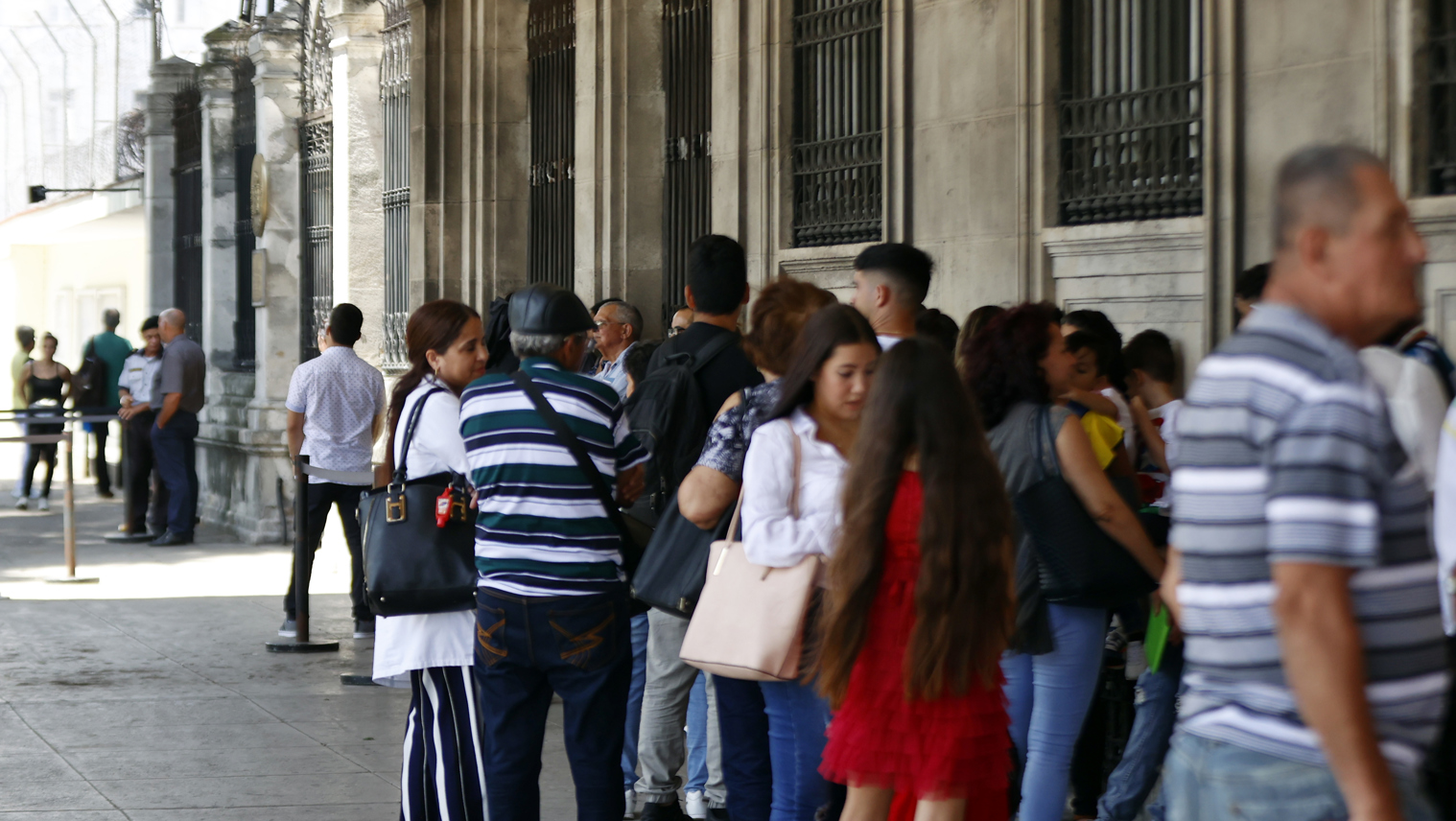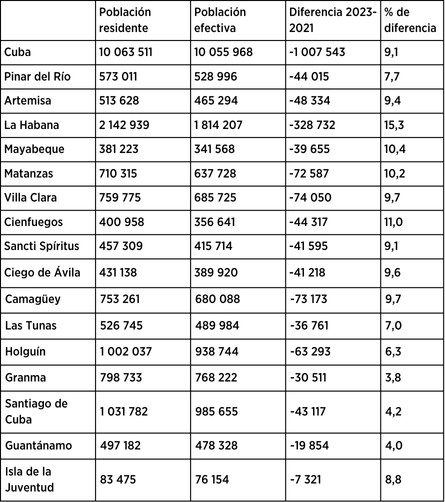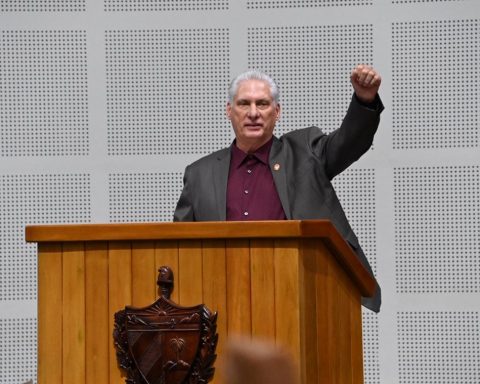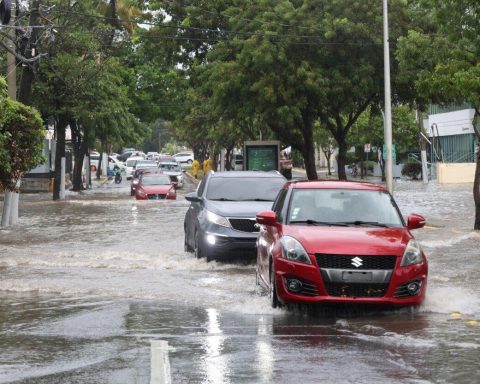The combination of low birth rates and increasing external migration has Cuba trapped in a process of demographic decline with no prospects for a solution in the short term.
The multidimensional costs of the phenomenon are already disturbing and barely manageable given the magnitude of the current economic crisis.
According to a report from the National Office of Statistics and Information (ONEI) confirmed on Friday, by the end of 2023 the island’s population fell to 10.05 million inhabitants – 10.1% more than the 11,181,595 counted in December 2020 – and “must continue to decrease.”
The data, presented to the National Assembly by Juan Carlos Alfonso, first deputy head of ONEI, is based on a calculation that took into account the unprecedented migration of the last three years, as well as births and deaths.
In the period from 2021 to 2023, only 284,891 children were born, 405,512 people died and 1,249,733 “remained outside the country.”
To carry out their calculations, the demographers took into account the fact that there are Cubans abroad who maintain their residence on the island, so, in light of the legislation in force until today – when approved a new Migration Law—, are not considered emigrants and are included as part of the population, even though they do not actually live in Cuba.
Resolving this contradiction required introducing the concept of “effective residence,” a new status that implies staying on the island for at least 180 days during a calendar year.

Alfonso explained in his presentation that “all persons who died in the calendar year and those who remain or remained outside the country on personal trips and did not accumulate 180 days or more of residence in the national territory in the last 365 days will be subtracted annually from the effective population.”
Thus, the balance, at the end of 2023, was 10,055,968 inhabitants on the island, similar to the total population in 1985.
It is estimated that between 2021 and 2023, 1,011,269 Cubans emigrated and only 6,263 immigrated.
Considering that the migration trend continues in 2024, The population on the island, at this time of year, could already be less than 10 million inhabitants.
Reproductive and productive ages
Alfonso regretted that almost 80% of the people who emigrated between 2021 and 2023 belong to the age range of 15 to 59 years, in their “reproductive and productive” stages.
According to calculations, the population lost 304,717 women of childbearing age (15-49 years), of which more than 70% are of more reproductive age (15-39 years).
Such a scenario will have an impact on the continued decline in the number of births recorded in recent years, which in 2024 should be below 80,000 births, the lowest figure since 1959, according to ONEI research.
Society with walking sticks
It is estimated that 24.4% of the Cuban population would be 60 years of age or older in 2023. Broken down by province, the oldest are Villa Clara with 26.2%, Havana, 24.8% and Sancti Spíritus, 24.2%.
The municipality of Plaza de la Revolución continues to be the one with the largest population aged 60 or over (35%), a notable figure at an international level. The municipality with the least ageing population is Yateras, in Guantánamo (16%).
For every 1,000 children aged 0-14, there are 1,511 adults aged 60 or older, with that figure rising to 1,902 and 1,728 in Villa Clara and Havana, respectively.
UN: by 2100 the Cuban population could have fallen to 1950 levels
“The country is becoming more old and for this reason it will present an aging economy characterized by the high cost for society and the family of attention and care for the growing elderly population, increasing the cost of social programs with an impact on social security and assistance and a smaller base for the renewal of the labor resources of the country and its territories,” stated the ONEI report.
By provinces
The province of Havana, the most populous, is the one that has recorded the greatest population decline between 2021 and 2023: 15.3%.
In turn, except for the capital of the republic, with 1,814,207 inhabitants last year, no other province has more than one million inhabitants. The cities of Holguín and Santiago de Cuba are no longer “millionaires.”
At the municipal level, the territories most impacted by population decline are Plaza de la Revolución, Camagüey and Playa.

In an interview with EFE last June, Juan Carlos Alfonso himself stated that the country will delay the population census it had planned to carry out two years ago until at least 2025 due to a lack of resources.
Cuba’s population fell by 18% between 2022 and 2023, according to an independent study
Other calculations
According to an independent study by Cuban economist and demographer Juan Carlos Albizu-Campos, Cuba’s population fell by 18% between 2022 and 2023, to 8.62 million people.
The calculation is based on the figures of Cubans who have arrived in the US between October 2021 and April 2024, which amount to 738,680 people, according to information from US authorities that combine visas, lyrics and irregular arrivals.
According to United Nations projections (UN), the Cuban population could be reduced to just under six million inhabitants by 2100, which would be a figure lower than that of its first record included, corresponding to 1950.
The number of inhabitants predicted for the island by this study would be 5.58 million within 76 years. The UN estimated the population of 237 countries or areas since 1950, supported by analysis of historical demographic trends.
OnCuba/EFE


















